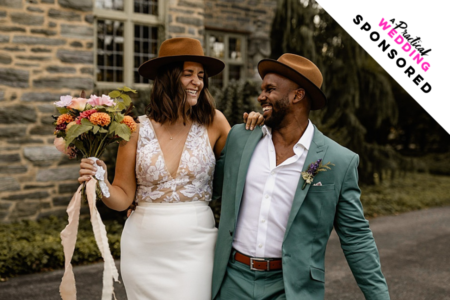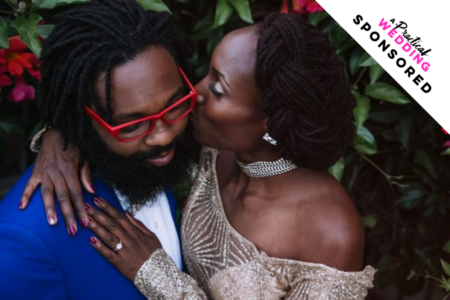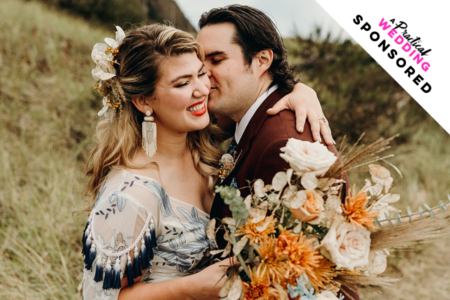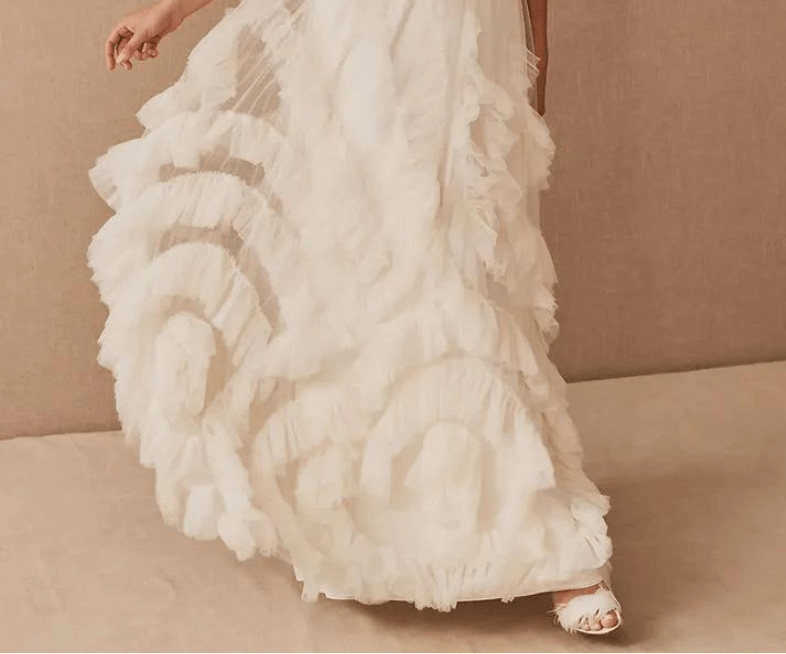*Joan, Seminarian and Ministerial Candidate & Jared, Graduate Student in Sociology & Public Affairs and Author*
Ok. So I was going to write an introduction about how much Joan & Jared’s wedding reminded me of our own interfaith families and our wedding… and then I was looking at the pictures and realized that Jared is wearing exactly the same tie as David wore on our wedding day. And then I had one of those magic connection moments. Because what Joan says about building a life together from two cultures is so perfect (and the joke about Yankee thrift vs. more recent immigrant culture is particularly hilarious, given that those of us from long lines of WASP families were raised to never show your hand when spending money, ever). But, more than all that, the bits Joan says about finding joy, re-negotiating family relationships, and the real reason weddings are important is such foundational stuff. If you’re planning, you can’t skip this post. Really.
The most remarkable thing about our wedding day for me was the simple and unabashed joy of it. This is noteworthy because so much of our wedding planning had involved careful thought, deliberate planning, and diligent organization. And, then, BAM. Joy. But, let me back up a little further lest I give the impression that joy = easy.

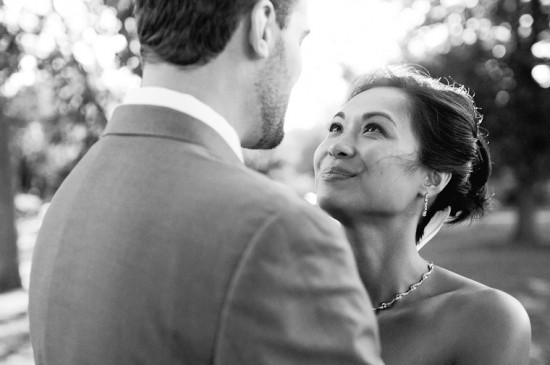
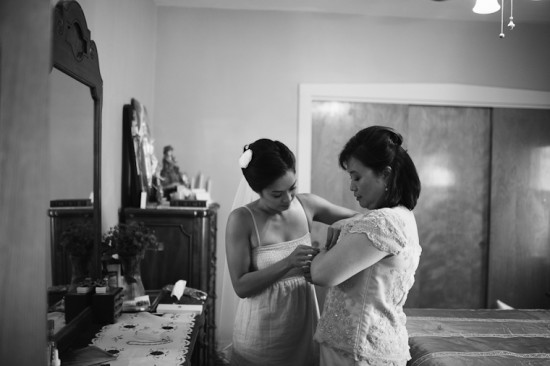

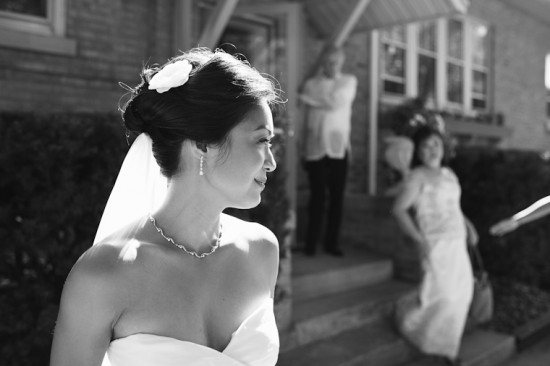



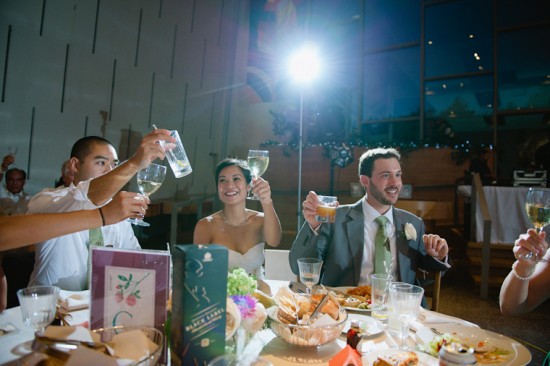
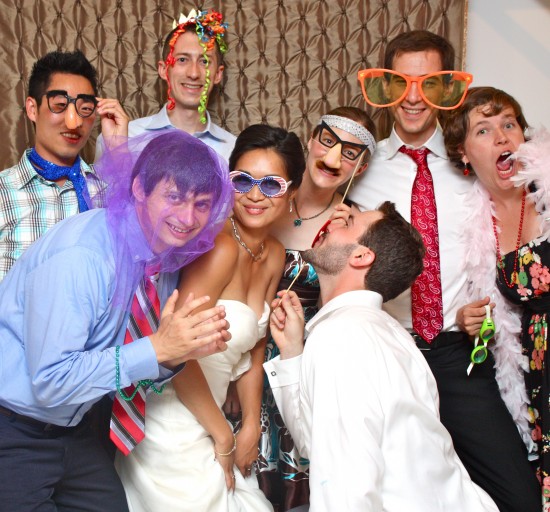
As I mentioned, Jared and I put a lot of careful thought and planning into our wedding. This is largely due to the fact that we are planners. (Trust me, we have the Google Docs to prove it.) But, we also embarked on this careful planning in order to thoughtfully address how best to put together our blended/hybrid wedding.
I come from a fairly traditional Filipino, Catholic family. Almost all the weddings in my family have taken place in Catholic churches as the celebration of the Sacrament of Matrimony. But, I am no longer a practicing Catholic and am preparing to be a Unitarian Universalist minister. Jared’s family is mostly a-religious and weddings have pretty much been celebrated in a secular fashion.
Jared and I are also from completely different parts of the country. Jared’s roots go back several generations in New England and much of my family ended up in Chicago, where I was born and raised, after my parents and a few aunts and uncles immigrated there from the Philippines in the 1970s.
Our very wise premarital counselor told us that she likes to think of any marriage as the coming together of distinct cultures. Given how different our backgrounds really are, Jared and I form a blended union to a T. What really mattered in our wedding planning, though, and what really mattered to us as a couple despite those differences, was living out our shared, common values with thought and care because those values are the foundation on which our partnership is built.
Before even officially becoming engaged, we had talked about our desire to get legally married in a state that has already extended that right to gay couples. Jared is from Vermont, one of the first states to legalize gay marriage. Not only would getting married in Vermont honor our value of marriage equality, it also meant a lot to us to be able to celebrate our marriage in the place that has always held a special place in Jared’s heart and has grown to in mine. So, we decided we would get married in parts. First, we would have a small civil ceremony in Vermont, where Jared is from, to get legally hitched. And then, we would have the full community celebration in Chicago with all our family and friends.
The brilliance of this plan, as it turned out, is that we got to have two weddings! Amazing!
Jared did most of the planning for the civil wedding from figuring out what papers we needed to file, to securing a location for the ceremony (the inn across the street from where his great-grandparents had lived), and lining up an officiant (his great-uncle Harvey who had also married his mother and step-father). Our Vermont wedding happened while we were in the thick of planning for the “big” wedding. Our short and sweet civil ceremony turned out to have just the right mix of spontaneity, planning, seriousness, and levity.
While we were legally married at this point, we still viewed our wedding in Chicago as the wedding. The official point at which we would call ourselves husband and wife. As an aspiring minister, putting a lot of thought into the ritualistic elements of our wedding was right up my alley. We very much felt like we were treading on new waters as we mapped out the series of events that we would call “our wedding” and designed the ceremony itself. Authenticity mattered to us. Having the wedding that would be meaningful to us and at the same time would respect and connect with my family’s traditions and rituals.
We asked the priest at my parent’s Catholic church to conduct a Mass of blessing and thanksgiving the day before our wedding. At the Mass, the priest blessed me and Jared as well as the Filipino marriage symbols (the coins, veil, and cord) that would be used in the wedding the next day. We then held our ceremony in a Unitarian church presided over by a Unitarian minister, and we incorporated the Filipino wedding rituals that are typically found in a Catholic service into our ceremony.
Incorporating the Filipino wedding rituals into our ceremony was partly motivated by a sense of obligation and duty. Yet, we also wanted to do so in a way that reflected our own values and the meaning of marriage for us. With the help of some of our family as well as the internet, we researched the history and meaning of the symbols and the typical way in which they are introduced and incorporated into a marriage ceremony. Traditionally, the symbols draw upon a rather patriarchal understanding of the husband-wife relationship and the institution of marriage. We weren’t down with this, so we adapted these rituals and wrote out our own descriptions that my younger brother read in our ceremony. This way, we felt connected to these family traditions while also making them meaningful to us and honoring our values.
Another big difference between our families is that Jared’s family culture is imbibed with a kind of Yankee thriftiness. For them, DIY isn’t just a hip new trend in craftiness, it’s what you do because you don’t have a lot of money and you know you can rely on your own ingenuity. For my family, achieving middle-class status as immigrants means not having to DIY. So, again we found a blended middle ground for our wedding especially for the decor. Jared’s mom, who is a very talented artist, hand drew and painted beautiful table letters for the dinner tables (each letter stood for a plant or flower from the Midwest or Northeast). We hope to bind them into a children’s alphabet book or hang them in a child’s room one day. Despite some reticence, I also convinced my father, who is a wonderful gardener, to plant some dahlias so that we’d have some home grown flowers to include in the bouquets and centerpieces. We also bought some flowers from an online wholesaler and Jared’s mom and a good family friend put those all together.
Despite all our careful planning, the unexpected did occur. For us, the unexpected turned out to be the sea of emotions our wedding unearthed not just in us but in our families as well. Many of the messages we get about the significance of marriage focus on the father-daughter relationship as one that dramatically shifts. While that was certainly a part of the family system change happening with our wedding, the more dramatic relational dynamics were really between me and my mother. This shouldn’t have been surprising to me, but it was one part of the whole wedding thing I just hadn’t planned for. The emotional upheaval came to a head in a rather dramatic mother-daughter confrontation two days before the wedding, and then, many more tears of release were shed during the Mass that Friday. By Saturday morning enough tears had been shed that my mother and I were able to enjoy some quality time at the salon getting our hair and make-up done and settling back into our mother-daughter relationship albeit with a new way of loving each other.
All of this background is important because the main thing I learned through getting married was that our wedding, while clearly being about our union, was also about so much more than that. It was also about growing up. Letting go and learning to embrace unexpected growth and change. It was about the joining of two people and two families and the effort and emotional engagement that entails. It was about forging new identities built on who we already are at our core. Through our wedding, I learned that all the planning and preparation of timelines and budgets doesn’t prepare you for the emotional significance of the event. What does prepare you is holding fast to the love at the center of that union and letting that love be your guide.
So when I entered the church that afternoon, all felt complete. And it was joy. Unexpected, unmistakable joy. Not easily come by. But ready and waiting.
The Info—Photography: Anna Bonick and Friends and Family / Venue: Unitarian Church of Evanston / Joan’s Dress: Jenny Yoo / Joan’s Veil: Bridal Ambiance via Etsy / Joan’s Hairpiece: Virginia Geiger via Etsy / Jared’s Suit: Groom’s closet / Jared’s and Groomsmen’s Ties: Cyberoptix Tie Lab via Etsy

